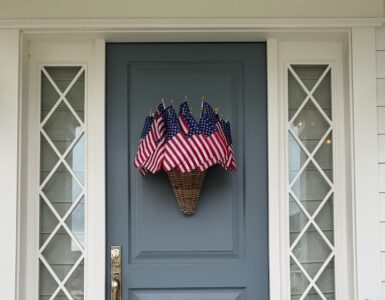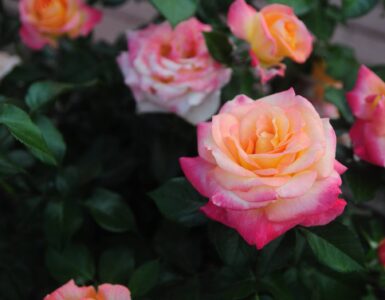Darin Engh, from Engh Gardens, highlights some of his favorite flowers for a red-hot garden and explains how they work their magic.
Plant List
• Smoke Tree
• Burgundy Japanese Barberry
• Heuchera ‘Velvet Night’ ‘Crème Brulee’
• Cuphea ‘Totally Tempted’
• Goldflame Spirea
• Lantana ‘Luscious Citrus Blend’
• Lysimachia ‘Goldilocks’
• Galardia ‘Arizona Sun’
• Superbena ‘Tukana Scarlet’
• Profusion Zinnia
• Red Geraniums
• Chrysocephalum ‘Flambe Yellow’
• River’s Purple European Beech
• Bidens ‘Solaire Yellow’
• Red Petunias
RED spells passion, power and pizzazz.
Everyone understands exactly what to expect from red: it attracts attention, it creates drama. A red border is always a stimulating visual pleasure. Red is best seen at mid- to close range. Green is the most dominant color in the garden, and red is directly opposite green on the color wheel; together they create unique vibrancy. As stunning as red is with green, it is sublime when harmonizing with darker red, bronze, or coppery foliage.
We think of hot colors as energetic and assertive.
In summer, as temperatures and the colors in our gardens cook up, reds, oranges, and yellows take on a larger role in the landscape, but it is autumn when these fiery colors pull out all the stops and put on their most spectacular show.
Textural interest is just as important as color selection. This is especially pertinent when it comes to exploring the hot shades. Attention-grabbing flowers in fiery tones of red, orange, apricot, and yellow are best appreciated when balanced by a supporting cast of contrasting foliage.
Red seems to have a polarizing effect on people. Either they love it and can’t get enough of it or loathe it and don’t want in anywhere near them.
In the cool of the mornings reds and yellow can be muted, especially when veiled in mist. In the other extreme, the concentration of rays form a setting sun can infuse colors with warm reddish tones, making hot colors even hotter. Create a spectacular effect by planting a western side with orange, gold, yellow, bronze and red. The backlighting from a setting sun would turn these colors into glowing orange, molten gold, burnished bronze, liquid yellow and fiery red.
Position reds where they can bask in late afternoon sun and the long rays of light can warm the back of the flowers and foliage and set them ablaze.
The addition of cream flowers can help to soften the powerful effect of hot colors, while the inclusion of very dark colors can also knock back the brilliance.
Warm, or hot, color harmonies can be created with bulbs and annuals, shrubs and perennials.
Hot colors usually dominate when mixed with cool colors.
Hot colors also jump out at the eye. For the greatest illusion of space, position hot colors in the foreground of your garden and back them up with receding cool ones.
For more information, you can contact Darin Engh at Engh Gardens in Sandy or online at www.enghgardens.com.















Add comment